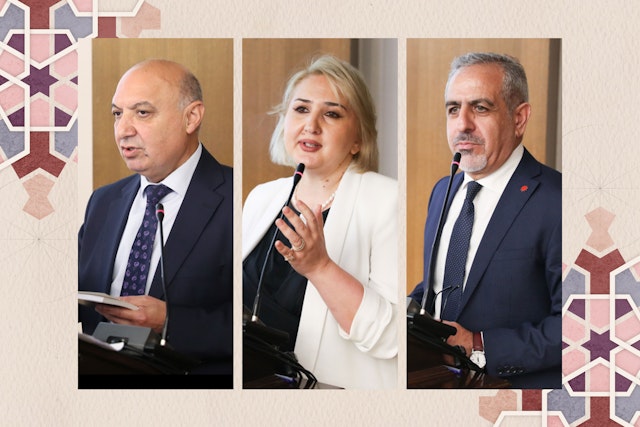In the annals of human intellect, few figures have transcended the conventional boundaries of science and philosophy as profoundly as Sir Isaac Newton and Bahá’u’lláh. The former, a luminary in the realm of physics and mathematics, laid the foundational principles of classical mechanics, while the latter, the Prophet-Founder of the Bahá’í Faith, introduced a holistic worldview that espouses the harmony of science and religion. This article endeavors to explore the intersection of their teachings and ideologies, intriguing readers with a playful question: How can the meticulous laws of nature articulated by Newton coalesce with the spiritual insights manifested by Bahá’u’lláh in fostering a unified vision of existence?
The intellectual legacy of Sir Isaac Newton, born in 1643, is indelibly etched in the fabric of modern science. His pioneering works, particularly “Philosophiæ Naturalis Principia Mathematica,” elucidate the laws of motion and universal gravitation, ushering in what is often referred to as the Scientific Revolution. Newton’s methodical approach to inquiry—characterized by observation, experimentation, and mathematical formulation—carved a path for future generations to navigate the complexities of the natural world. His insights into the behavior of celestial bodies and the principles underlying physical phenomena have become cornerstones of scientific understanding.
Yet, to examine Newton solely through the lens of empirical inquiry would be to overlook his contemplative spirit. Newton was, in fact, deeply engaged with theological questions and the interrelation between the material and the spiritual realms. His manuscripts reveal a profound fascination with biblical prophecy and divine mechanics. This enigmatic convergence of scientific exploration and religious inquiry challenges the dichotomy often posited between faith and rationality. How might we reconcile this apparent paradox in the context of Bahá’u’lláh’s teachings?
Bahá’u’lláh, born in 1817 in Persia, articulated a vision that harmonizes the insights of science with the teachings of religion. Central to Bahá’í belief is the assertion that true knowledge can be attained through both material and spiritual avenues. His writings assert that science and religion are like two wings of a bird; without both wings, humanity cannot achieve its potential. This perspective compels adherents to embrace knowledge, encouraging engagement with scientific inquiry while simultaneously nurturing their spiritual development. Bahá’u’lláh’s emphasis on the compatibility of scientific advancement and spiritual enlightenment aligns with Newton’s own explorations into the divine nature of reality.
The challenge arises, however, when one contemplates the contemporary context: How do we navigate the contemporary landscape where dogmatic assertions often polarize scientific and religious communities? As we delve into the implications of Bahá’u’lláh’s teachings in relation to Newton’s scientific principles, it becomes evident that the path to reconciling these domains rests upon a shared commitment to inquiry and open-mindedness.
Newton’s laws are not merely mathematical constructs but reflections of a deeper order inherent in the universe. This echoes Bahá’u’lláh’s assertion that God’s creative power permeates all of creation, manifesting in the laws and patterns that govern both physical phenomena and spiritual truths. For instance, the law of gravitation, which encapsulates the attraction between masses, can be metaphorically linked to the pull of divine love that Bahá’u’lláh speaks of—a force that draws humanity together towards unity and cooperation.
In a world beset by ideological divides, the teachings of both Newton and Bahá’u’lláh present a call for integrative dialogue. The Bahá’í paradigm encourages individuals to eschew sectarian biases in favor of a collaborative approach that acknowledges the contributions of both scientific inquiry and religious understanding. The intersection where scientific progress meets spiritual inquiry invites an enriched perspective on existence. One might ponder: can this synthesis provide the solutions to contemporary global challenges such as climate change, social justice, and communal discord?
The Bahá’í perspective posits that knowledge, irrespective of its source, is ultimately a manifestation of the same divine truth. This philosophy advocates for a lifelong pursuit of understanding—an endeavor that necessitates the integration of scientific and spiritual knowledge. The current socio-political climate, marked by fragmentation and ideological strife, underscores the urgent need for a paradigm shift towards a more unified vision of knowledge.
In addition, Bahá’u’lláh’s teachings on the oneness of humanity resonate deeply in the context of Newton’s scientific contributions. The observable universe, governed by consistent laws, mirrors the fundamental unity that Bahá’u’lláh espouses for humanity. The shared principles of scientific inquiry provide a common ground for collaboration, irrespective of geographical, cultural, or religious boundaries. This synergy cultivates an environment conducive to mutual respect and understanding, thereby advancing societal development.
Moreover, both Newton and Bahá’u’lláh emphasize the importance of humility in the pursuit of knowledge. Newton’s acknowledgment that there remains much to explore— “If I have seen further, it is by standing on the shoulders of giants”—invokes a spirit of inquiry and respect for the vastness of knowledge yet to be uncovered. Similarly, Bahá’u’lláh advocates for a humble approach to understanding the divine will, recognizing that human perception is but a fragment of a greater reality.
In conclusion, the integration of Sir Isaac Newton’s scientific principles with Bahá’u’lláh’s spiritual insights provides a compelling framework for fostering a harmonious coexistence of science and religion. This synthesis encourages individuals to engage with the world through a dual lens—one that appreciates the rigor of scientific exploration while embracing the transformative power of spiritual wisdom. How, then, do we propagate this harmony in our daily lives? The answer lies in cultivating an ethos of inquiry, respect, and unity, allowing us to navigate the complexities of existence while striving for the greater good of all humanity.
